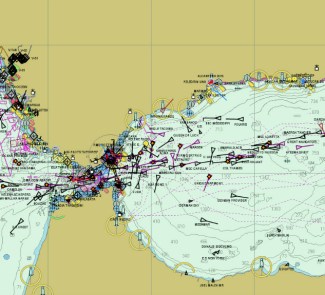The word gamification comes from the word «game». Through gamification, we can increase professional and commercial success exponentially.
Among the English terms adapted to the Spanish business environment, the word gamification, derived from game, is gaining a lot of currency. While there are several definitions of the word, simply and perhaps a bit too vaguely, it might be defined as introducing the dynamics associated with games into more serious applications, such as those related to professional productivity and communication.
I will cite two examples which, in my opinion, are successful and illustrate this concept very well. One is Foursquare, an application that simply consists in pointing out where you are (or checking-in) and, based on the number of times you visit the same place, or the frequency or variety of your check-ins, you are assigned a number of levels and titles (mayor of the site, traveller, and so on). The other is TripAdvisor, where neutral opinions about the places we have visited are encouraged based on the the number of reviews we write, the variety of cities and countries we visit and the usefulness that other members of the community ascribe to the things we publish.
This can also be brought to more serious environments, such as with Email Game , where we play a ‘game’ to see how fast and productive we are at managing our InBox.
The Email Game
Like many things in our environment that we have not analysed in depth, we may think that playing on the computer is childish and therefore introducing gamification into our professional or business applications can detract from their credibility. The fact is that the basis for justifying gamification is rooted firmly in the human condition.
We all know it and have felt it. The feelings of satisfaction, success, achievement, victory, release endorphins that make us feel better. In a very similar way, dopamine is the hormone that makes us seek rewards and is directly related to motivation. The game and its potential reward, therefore, motivate the user and generate emotional relationships that will enhance our application, business or brand. Studies also show that there are 4 types of games that we can ‘gamify’ in our product or service:
- Challenges: Games that present us with something very difficult to achieve where the motivation lies in the complexity.
- Discoveries: Simple games. The motivation is in the discovery of new options/features.
- Social: The motivation lies in the fact the game is enjoyed socially and the recognition this brings.
- Serious: Motivation comes from real and tangible rewards.
Gamification should be a philosophy in our personal and professional lives, where we apply a points and rewards system so that we do mundane, repetitive tasks in the most creative and efficient ways possible. This model, and not the punishment model, has most impact in education. Many of you have implemented a reward system with your children that is not based on «tangible» things (like a console) but instead on stickers, personal recognition, or something similar.
For all these reasons, the potential for digital business is huge and there are numerous publications, studies, and analyses on how we can implement a proper gamification strategy. I will not dwell on this part because it is part of the current hype surrounding the term.
Gamification is another example of my theory that technology does not change basic human nature, but does empower humans to a greater or lesser extent, in one way or another, and that, perhaps, the big difference with the past is that now we can create millions of different stimuli for millions of people in very short time thanks to technology, thus generating more success stories that are also known to all. The basic stimuli, however, are the same.
Image: Tilo Motion










